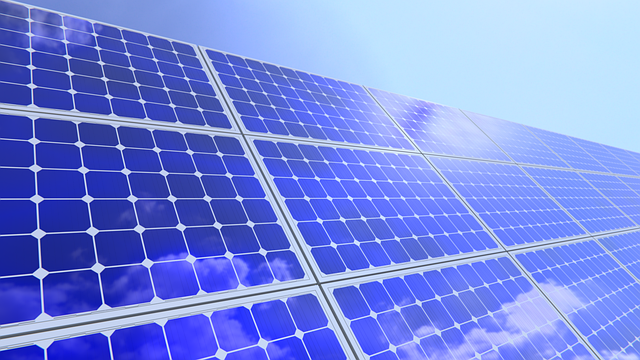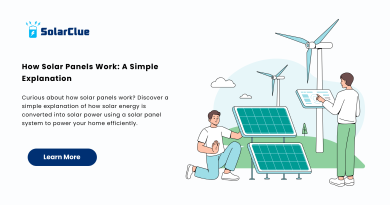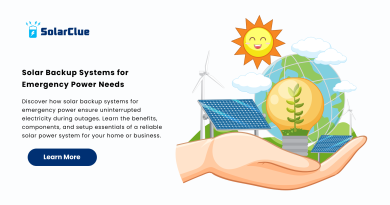Solar Photovoltaic System
Table of Contents
Solar Photovoltaic System: Harnessing the Power of the Sun for a Sustainable Future
In an era where climate change is an ever-looming threat, finding sustainable sources of energy has become paramount. Solar photovoltaic (PV) systems have emerged as a game-changing solution to this problem, harnessing the power of the sun and converting it into clean, renewable electricity. In this blog, we will delve into the intricacies of solar photovoltaic systems, exploring how they work, their benefits and limitations, and their potential to shape a brighter, more sustainable future.
How Solar Photovoltaic Systems Work
Solar photovoltaic (PV) systems operate on a simple principle: sunlight is converted into electricity through the use of solar panels. These panels are constructed with semiconductor materials, typically silicon, which have special properties that allow them to absorb photons from sunlight. When sunlight strikes the surface of a solar panel, the semiconductors absorb the energy, which in turn, knocks electrons loose from their atoms, generating direct current (DC) electricity.
To convert this DC electricity into alternating current (AC) electricity, which is what our homes and businesses use, an inverter is necessary. The inverter takes the DC electricity produced by the solar panels and converts it into AC electricity that can power our homes or be fed back into the grid. In some cases, batteries may also be used to store excess energy for use during cloudy or nighttime periods.
The Benefits of Solar Photovoltaic Systems
1. Renewable and Sustainable: One of the most significant advantages of solar photovoltaic systems is that they rely on the sun, a virtually inexhaustible source of energy. Unlike fossil fuels, which produce harmful greenhouse gas emissions and contribute to climate change, solar energy is clean and renewable.
2. Reduced Energy Costs: Installing a solar photovoltaic system can substantially reduce your electricity bills. Once installed, solar panels generate free electricity, providing an opportunity to dramatically reduce or even eliminate your dependence on utility providers. Additionally, some countries offer incentives, such as net metering, allowing you to sell excess electricity back to the grid.
3. Environmental Benefits: By utilizing solar energy, we can significantly reduce our carbon footprint. Solar photovoltaic systems produce no greenhouse gas emissions during their operation, helping combat climate change and air pollution. Moreover, their silent operation and lack of moving parts result in minimal disruption to the environment.
4. Energy Independence: Solar photovoltaic systems provide individuals and communities with energy independence, as they become less reliant on centralized power grids. This can prove vital during natural disasters or other emergencies when power outages occur.
5. Long Life Span and Low Maintenance: Solar panels are designed to withstand harsh weather conditions and have an average lifespan of 25-30 years. With minimal maintenance requirements, solar photovoltaic systems offer a dependable and cost-effective energy solution.
The Limitations of Solar Photovoltaic Systems
1. Intermittent Energy Source: While solar energy is abundant, its availability is dependent on the weather. Cloudy days or longer nights can limit the amount of sunlight absorbed by solar panels, which in turn, affects energy production. However, advancements in battery storage technologies are addressing this limitation, allowing excess energy to be stored for later use.
2. Upfront Costs: While over the long term, solar photovoltaic systems can save money, there is a significant upfront cost associated with the installation of solar panels and related equipment. However, with declining panel prices and various financing options, such as leasing and Power Purchase Agreements (PPAs), solar energy is becoming increasingly affordable.
3. Space Requirements: To achieve optimal efficiency, solar panels require adequate space for installation. Not every building or location may have sufficient roof or ground space to accommodate an extensive solar system. However, the solar industry is constantly innovating to develop more compact, efficient panels that can be installed in various settings.
The Future of Solar Photovoltaic Systems
The rapid advancement of solar photovoltaic systems has paved the way for a bright future in renewable energy. With ongoing technological innovations, the efficiency and cost-effectiveness of solar panels are continually improving. Moreover, the integration of solar PV systems with other renewable technologies, such as energy storage and smart grids, promises to make solar energy an even more reliable and flexible option.
As national governments and global institutions become increasingly committed to combating climate change, we can expect to see greater investment in solar photovoltaic systems. This investment will drive research and development, leading to improved efficiency, longer lifespan, and reduced costs.
Conclusion
Illuminate your home with SolarClue®’s guide on solar photovoltaic (PV) systems. Transforming sunlight into electricity, these systems come in grid-tied, off-grid, and hybrid types. SolarClue® assists homeowners in selecting the right system based on their energy needs and location. Grid-tied systems connect to the grid, allowing homeowners to offset costs. Off-grid systems use batteries for energy storage, managed by a charge controller. Hybrid systems offer the benefits of both, ideal for locations with unreliable grid access. SolarClue® explains the role of inverters and optimizes system efficiency for maximum energy production. Embrace clean energy, reduce carbon emissions, and experience seamless solar solutions with SolarClue®. Contact us for a brighter and sustainable future.
Frequently Asked Questions
A solar PV system converts sunlight into electricity using photovoltaic cells. These cells, typically made of silicon, generate direct current (DC) electricity when exposed to sunlight.
Solar PV systems are classified into grid-tied, off-grid, and hybrid systems. Key components include solar panels, inverters, mounting structures, and a charge controller (for off-grid systems).
Certainly, SolarClue® provides expert consultations to help homeowners assess their energy needs and choose between grid-tied, off-grid, or hybrid solar PV systems based on their location and requirements.
Grid-tied systems allow homeowners to generate solar power while remaining connected to the grid. Excess electricity can be fed back to the grid, often earning homeowners credits or reducing their electricity bills.
Off-grid systems store excess energy in batteries for use during periods of low sunlight. A charge controller regulates the charging process, preventing overcharging and extending battery life.
Hybrid systems combine the features of grid-tied and off-grid systems, providing flexibility. They are ideal for locations with unreliable grid access, offering energy independence with the option to connect to the grid.
Absolutely, SolarClue® provides insights into the role of inverters, explaining the differences between string inverters, microinverters, and power optimizers, assisting consumers in making informed decisions.
Factors include panel efficiency, proper orientation, shading avoidance, and regular maintenance. SolarClue® guides homeowners in optimizing these factors for maximum energy production.
Solar PV systems produce clean energy, reducing reliance on fossil fuels and lowering carbon emissions. By adopting solar energy, homeowners contribute to a more sustainable and eco-friendly energy landscape.
SolarClue® offers end-to-end solutions, guiding homeowners through the entire process, from initial consultation to system design, component selection, and installation, ensuring a seamless and satisfying experience.



